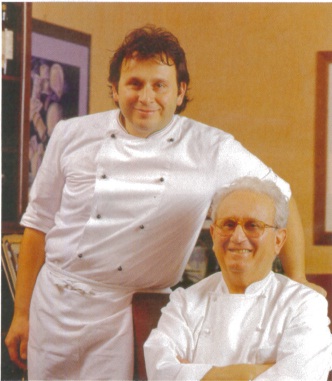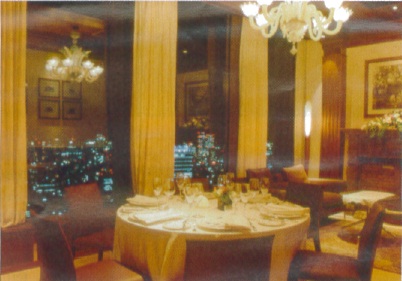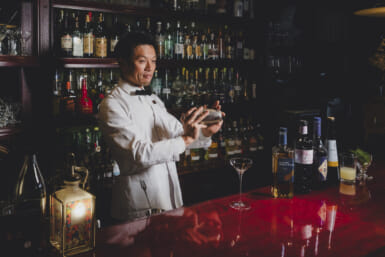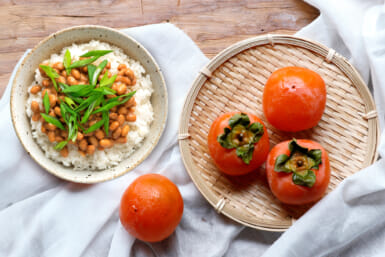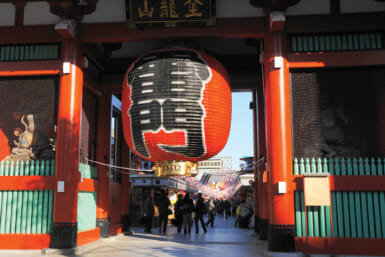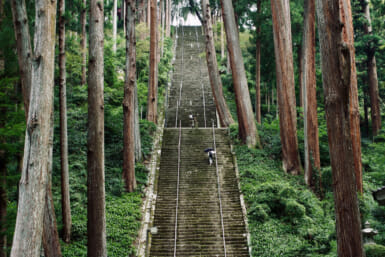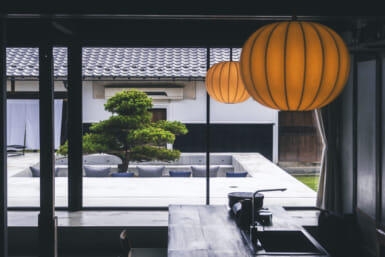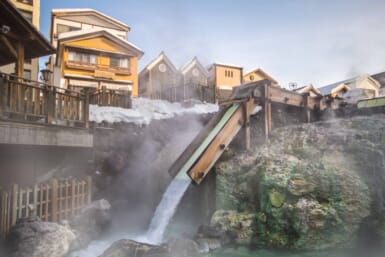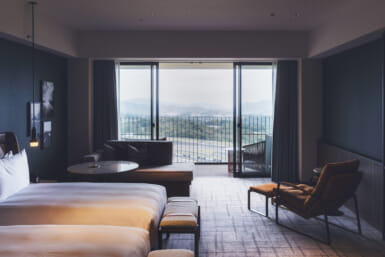by Christine Cunanan-Miki
Few Italian restaurants in Tokyo come with such impressive credentials as Antica Osteria del Ponte (AOP from hereon), the only branch of a family-run restaurant in Milan run by a friendly chef named Ezio Santin. AOP, which means ‘The Old Inn at the Foot of the Bridge,’ gained fame for being only the second restaurant in Italy to receive three Michelin stars from Europe’s finickiest bunch of restaurant reviewers. (It is currently rated as a two-star). And a meal at AOP Tokyo is not too far from the original since 70 percent of the recipes served here come from Milan, and Tokyo chef Frederic Cartier was handpicked by Santin himself from his army of protegees.
However whether in Milan or in Tokyo, a meal at AOP is refinement personified — so much so that it’s almost like French haute nouvelle cuisine rather than Italian. It’s all about using fresh top-quality ingredients with nothing but the slightest hint of sauce — so those who are more accustomed to hearty pasta and roasts will find themselves wishing for an extra serving of spices on the side. But it’s precisely the chef’s confidence in his ingredients that allows him to cook food with a hand clamped tight on the seasonings cabinet. And once you get used to the subtlety, you’ll appreciate the natural flavors coaxed ever so gently out of the delicate materials and the contrasts created from combining the unlikeliest of ingredients.
Since it’s opening, I’ve had several meals here and each time I’ve particularly enjoyed the pasta dishes, which are refreshingly light. On my most recent visit, I tasted a freshly made paper-thin cannelloni with goat’s cheese and a seafood sauce that was powered mainly by crushed shrimp. I was quite apprehensive about this rather strange combination until I actually took a bite and experienced the mellow merging of slightly salty cheese and slightly sweet crustacean liquid. Having so appreciated this pasta, to my husband’s surprise I ordered another one — this time a spaghetti with sweet Prunilli tomatoes, red pepper and salted dried tuna roe. The noodles arrived perfectly al dente topped with a simple sauce that again only hinted at saltiness. For main courses, I had a turbot with black truffle juice and a beef fillet with red wine-flavored butter and, frankly, I enjoyed the latter much more. The beef was seasoned with Japanese and Jamaican pepper, and the flavored butter gave the meat more depth than I expected.
Finally, I’m not usually a big fan of Italian desserts, preferring the variety and complexity of French ones. However, AOP unleashes its creative instincts here with a vengeance, and the result is a formidable dessert selection that is too good to miss. Two particular stand-outs are a warm chocolate cake with milk ice cream and yoghurt sauce (¥2,000), which paired the sourness of yoghurt with the sweetness of milk; and a truly wonderful strawberry compote with almond ice cream and a strawberry and balsamic vinegar sauce (¥2,000).
Good food aside, these two AOP restaurants could not be more different. The original AOP operates out of a restored 14th century inn in a sleepy little hamlet about an hour’s drive west from Milan, while Tokyo’s AOP is located high atop Tokyo on the 36th floor of the swanky Marunouchi Bldg., with expansive views of the city. Tokyo’s AOP is an elegant restaurant with a beautiful wood-paneled foyer and a modern but classic dining room accessed via a corridor built through the wine cellar. It’s an unparalleled setting for sampling the type of cooking that has so delighted the Michelin inspectors.
WHAT TO EAT
The pasta choices are wonderful, and the spaghetti with Prunilli tomatoes and tuna bottarga (¥4,300) and the ravioli with ricotta and pecorino cheese (¥4,000) are especially good. A fresh cannelloni with goat’s cheese in a seafood same occasionally makes its way to the set dinner courses. It you see this on a set menu you’re not ordering, try asking restaurant manager Francesco to serve this as a la carte order. And save room for desserts.
WHAT TO DRINK
Start your evening with a sweet but citrusy white from Emilio-Ro-magna called Malvasia Sorriso di Cielo 2000 (¥1,500 per glass) that goes well with appetizers and pasta. Among the reds, we loved a fruity and full-bodied Tuscan wine called Mormoreto 2000 (¥3,500 per glass) that tasted of raisins and was perfect with meat.
WHERE TO SIT
Tables number nine and six are corner window tables with great views ot Otemachi and Marunouchi.
HOW MUCH DID IT COST
¥50,000 should cover a full-course meal for two and a nice bottle of wine.
WHO GOES THERE
A whole assortment of Italian food lovers. We saw a table of very distinguished-looking foreign and Japanese businessmen alongside a couple of young IT mogul-types who looked like they had money to burn, and a couple on a romantic date.
WHO TO ASK FOR
Restaurant manager Francesco, an old Tokyo hand who some diners might recognize from his days at the Italian restauranl L’Affresco in Hibi-ya, is the person to seek out for recommendations and special requests.
Antica Osteria Del Ponte
Marunouchi bldg. 36F, Marunouchi 2-4-1, Chiyoda-ku.
Tel. 03-5220-4686
www.anticaosteriadelponte.jp

